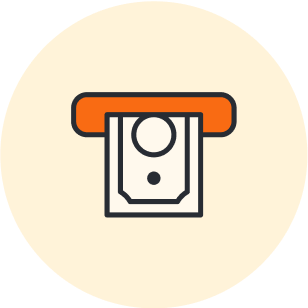
What an effective sales onboarding process looks like
Reading time: about 10 min
Topics:
As your company grows, so do your sales goals. To keep up, you hire more sales reps and do your best to get them ramped as soon as possible so they can start closing deals and contributing to your bottom line.
Unfortunately, the reality is rather harsh: Your new reps will take an average of three months to be ready to interact with buyers, nine months to be competent to perform, and 15 months to become a top performer. That’s more than a year before new reps are hitting their numbers, and a fast-growing sales org doesn’t have that kind of time.
The secrets to faster sales rep onboarding:
- Stop bombarding new hires with data and resources
- Create a process that helps them better retain vital information
- Make ongoing coaching a priority
For both new hire ramping and changes in territory management, teams should adopt a more process-oriented approach to improve sales onboarding.
Get the selling process in place and then hire the individuals to follow those best practices and processes. Clearly defined roles, benchmarks, and handoffs are necessary for today’s sales orientation planning.
Use the following sales onboarding best practices to set your new reps up for success from day one.
Set goals for ramping up
First, you need to figure out how you expect sales reps to perform for the first few months. Sales thought leaders recommend three different ways that you can determine the ramp-up time for new sales reps:
- Sales cycle + 90 days: If the deals within your sales org usually take four months to close, you can’t expect your rep to start closing within two. The standard has been a 90-day buffer for the employee onboarding and sales training process, but you should adjust according to your org.
- Sales cycle + sales training + experience: This ramp time considers the length of your sales cycle and accounts for training. However, you would also adjust the ramp period based on the rep’s experience, with less time for more seasoned reps.
- Time to reach 100% quota: If your company doesn’t have a standard sales cycle, you should average the amount of time it takes for new sales reps to reach 100% of their quota.
Continually gather data about your sales org because ramp time will depend entirely on your sales org’s performance and hopefully become shorter over time. Find the right balance. Research from Gong.io shows significant ROI resulting from a decreased ramp time—sales reps who were fully onboarded in five months made $80,000 more in their first year than sales reps with the same quota who were onboarded in seven months.
However, be honest about your expected ramp rate. Sales reps shouldn’t feel overloaded, and an accurate timeline will also help you adjust your hiring plans to bring on additional staff who can fill the gaps until new sales reps perform at 100%.
Balance training with application
One of the biggest mistakes that sales orgs can make during the sales orientation process is the data dump.
A sales rep that starts at a new company is subjected to all-day training sessions for the first week or two, where they see slide after slide of sample call scripts, company messaging, and rules of engagement. While this strategy conveys a lot of useful information very quickly, many reps can’t retain that much information. The human brain struggles with knowledge retention, which means reps can forget as much as 87% of their onboarding within the month if it isn’t reinforced or reps aren’t required to use it.
If you want onboarded reps to bring in customers faster, you need to require reps to apply the information they’re learning, explain messaging beyond pitching the product or service, ask reps to practice their pitch with other reps, and review best practices for processing and qualifying leads. This allows your sales reps to process the information on various levels and even put it into practice while it’s fresh.
Speaking of practice, don’t wait too long to give your reps the opportunity to put their skills to work. Simulated activities have their place, but a real-life sales situation can expose your rep to the questions, experiences, and stakes involved in an actual pitch.
Incorporate product training
While you should definitely spend time training on sales processes and best practices, don’t forget about an often overlooked but essential aspect of the job: Your sales reps need to understand your product or service. Not only will they need to demo the product, but to provide an optimal buyer experience, they will need to know how to link your solution to pain points that the customer faces.
Coordinate with your product education team or even your engineering and product development teams to show reps how the product works, why it was designed this way, and what is coming up next for the product. You may want to consider using visuals, such as current and future state diagrams, so it’s clear to sales reps how the product will be implemented and what effect it can have on a customer.
Remember: Demonstrating value is different than being able to explain product features. New reps also need to know who is buying the product and how it provides value to these potential customers—or none of the product knowledge they have learned will matter. Coordinate with your marketing team to show your new reps buyer personas, case studies, testimonials, and potential use cases, then test reps on their knowledge.
It’s all about balance. Practice selling skills that will improve reps’ performance and contribute to their personal development and growth, but don’t leave out your company-specific product knowledge that will help reps build trust with customers.

See why product training is crucial to the success of your sales reps.
Read nowGive reps a one-stop shop for resources
Even with the most efficient sales onboarding process, reps are likely more than a little overwhelmed, and a fair amount of what they’re learning is going in one ear and out the other. That’s why it’s crucial that you make it easy for them to find all this information again—and again and again.
Create and store resources in a centralized location. Ideally, that location is in the cloud so that reps can access the most up-to-date resources anytime, anywhere. In addition, you can easily compile resources from other reps so that your entire team can share their knowledge in one spot.
Here are some ideas on the types of resources to include in this library:
- Create visuals to show rules of engagement, process handoffs, and best practices for processing and qualifying leads—reps are learning so many new and crucial processes, and a visual format makes them easy to understand and quick to reference.
- Include pitch decks, modifiable templates (including current and future state documents), and best practice documents.
- Map out an entire sales cycle so reps can see every aspect of the sale before jumping in themselves.
- Include case studies, customer testimonials, and competitor comparisons.
It might sound obvious, but be sure you train reps on how to use this gold mine of information once you’ve compiled it. Tag and filter content to make it easily searchable. Employees spend an average of five hours a week looking for project information, and reps spend about an hour a day just doing administrative tasks—like making their own content, both for their own understanding and to share with customers. Give them that time back and allow them to push the deal forward faster by showing them where the central repository is located and how best to navigate it.
Provide ongoing coaching
Coaching is one of the biggest factors in sales performance and is crucial for getting reps up to speed quickly. But sales coaching isn’t a sprint; it’s a marathon. While teaching is simply sharing knowledge with reps, coaching is helping reps master it, and that can’t be done in a few days or weeks.
It’s essential that managers create personalized sales training plans to help reps gain confidence in their abilities. Yes, this will take time. But research shows it will pay off: When sales enablement practitioners work with frontline sales managers to improve their coaching abilities, organizations report a 6% improvement in rep quota attainment.
Good coaching programs also translate to better retention and recruitment of top sales talent. When enablement effectively manages talent processes, the likelihood that organizations will struggle with hiring top sales talent decreases by 32%.

Take your sales coaching to the next level with these tips.
Read nowCoordinate account handoffs
Account handoffs are a necessary part of the onboarding process. However, handoffs can be painful for the buyer experience and be disruptive when you’re in the middle of the sales cycle or you’re trying to expand the account. Internally, ramp time is expected with new employees, but don’t expect the customer to backtrack, slow down, or wait for new account owners to catch up. Try to make the transition as seamless as possible for customers to maintain relationships and close deals.
Having the proper processes and documentation in place can minimize any friction between the account owner and the customer. With the proper preparation, you can ensure seamless account handoffs. For every account, do the following:
-
Hold rep-to-rep meetings: This is an opportunity to exchange questions, advice, and any documents that contain key information about the account, such as account maps or notes, including any prospect details.
-
Store account information in a central location: Accessible and up-to-date account information allows reps to jump right in and immediately understand who are the stakeholders, champions, and decision-makers. Reps can be quickly briefed on months’ worth of conversations and relationships established with the customer about their challenges and objectives
-
Provide extra support for big accounts: In addition to sharing pertinent information via account maps, consider a process where management provides additional support to the new sales reps or post-sales teams. This could look like extra 1:1s, help with deal reviews, sitting in on calls before the handoff, more productive QBRs, job shadowing, etc.
-
Incentivize smooth transitions: Determine if sales reps should be tied to the account long term—stepping into some version of an account manager role. You might just consider a short-term spif to ensure a successful handoff before permanently transferring to a new rep or post-sale team.

See additional suggestions for improving account handoffs from one sales rep to the next.
Learn moreSet your reps up for success
How you go about training your new reps can have a big impact on your bottom line. While many teams approach employee onboarding by providing an onslaught of information in a limited period of time, data shows that you’re not setting up your reps for success with this method.
Instead, successful organizations take a process-oriented approach to ramping by setting goals for sales onboarding that are in line with your sales cycle, providing training in digestible bits and with hands-on experiences, investing in an ongoing coaching strategy, and coordinating account handoffs to improve territory alignment management. Adjusting your sales training processes and using available tools more effectively can speed up ramp time, which you’ll find is well worth the investment.

Learn about the different ways Lucidchart can level up your sales teams.
Check it outAbout Lucidchart
Lucidchart, a cloud-based intelligent diagramming application, is a core component of Lucid Software's Visual Collaboration Suite. This intuitive, cloud-based solution empowers teams to collaborate in real-time to build flowcharts, mockups, UML diagrams, customer journey maps, and more. Lucidchart propels teams forward to build the future faster. Lucid is proud to serve top businesses around the world, including customers such as Google, GE, and NBC Universal, and 99% of the Fortune 500. Lucid partners with industry leaders, including Google, Atlassian, and Microsoft. Since its founding, Lucid has received numerous awards for its products, business, and workplace culture. For more information, visit lucidchart.com.
Related articles
Lucidchart as a Sales Tool: How You Can Sell Efficiency in a Single Diagram
One diagram can help a potential customer visualize the way your product will fit into their company. Read how sales reps use Lucidchart to show value.
Proper Sales Goals for Proper Sales Practices
Andrew Friedenthal offers advice on setting reasonable, attainable sales goals that won’t incentivize fraudulent techniques.
Visualizing the sales funnel
Learn the basic stages of the sales funnel and how building your own funnel can help you attract a qualified customer base.
The outside sales process handbook
Your guide to the outside sales process—what it is, when to use it, and how to improve it.
